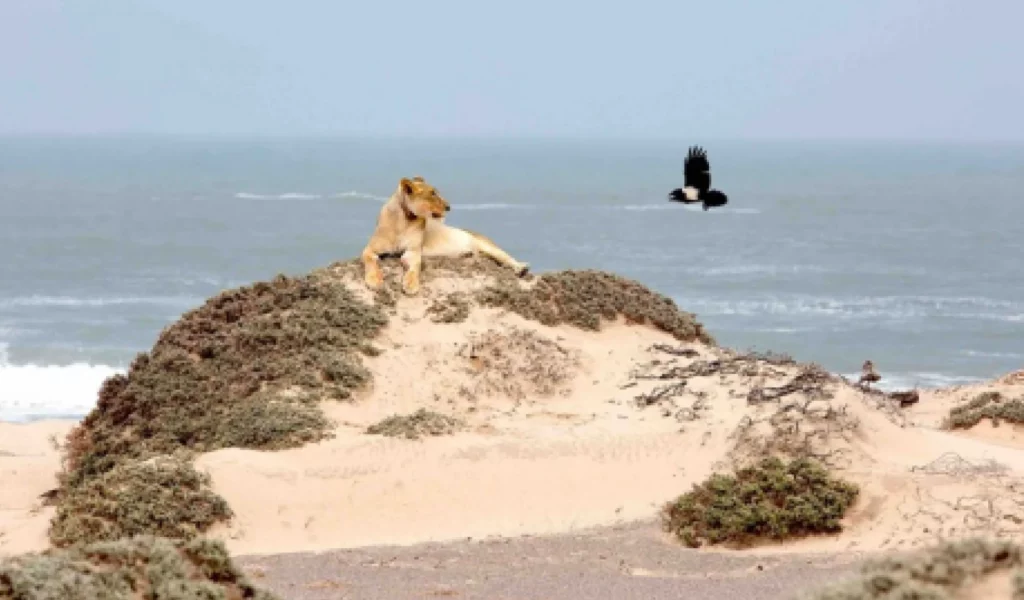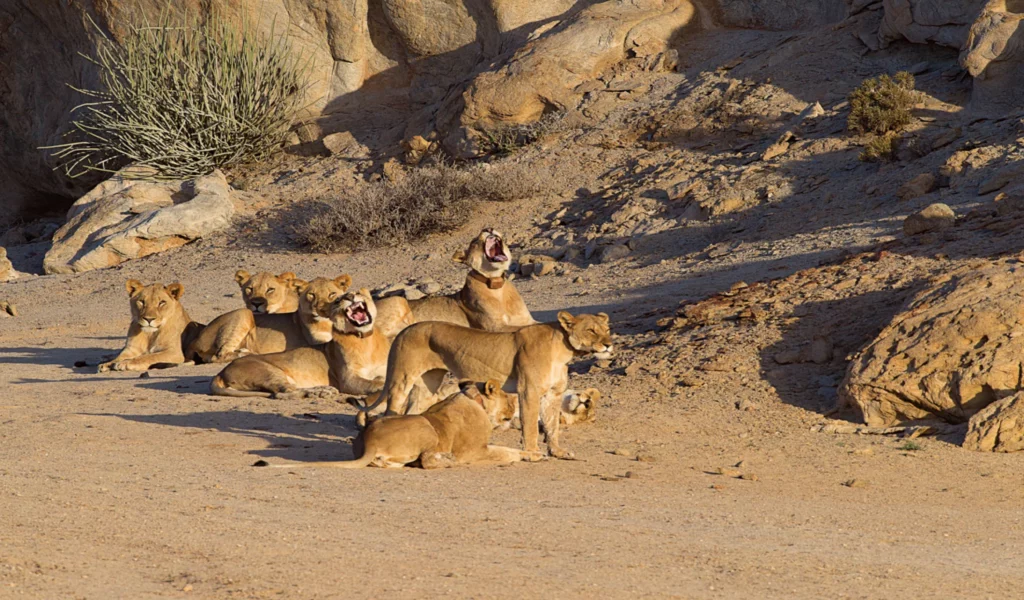Despite being near extinction in the early ‘90s, and thanks to the pioneering work by the celebrated conservationist, Philip (Flip) Stander, the desert lions on the Skeleton Coast and in northwest Namibia are now not only surviving, but also breeding and thriving. Numbers have increased from just 20 lions in 1992 to around 100 today and, while the lions may pose a threat to livestock farmers and nearby local communities, it is possible – through effective and fast communication – to protect everyone and every animal. None of this would be possible without the technology and communication, provided by Paratus Namibia.
In adapting to their harsh environment, desert lions uniquely hunt seals and cormorants on the Skeleton Coast. The Desert Lion Conservation Trust (DLCT) reports that these lions do not venture further inland to kill domestic livestock, when their natural prey animals are scarce. “Our research shows that this is not only unique behaviour among any African lions”, explains Flip, “but it also reveals that these beach lions can survive on their marine catches alone and derive all they need from what they hunt on the beach.”
Threat to the human-lion symbiotics
A major challenge exists during the popular annual Torra Bay fishing season in December and January, when thousands of enthusiastic anglers descend on the area. Because of the potential conflict, Flip Stander spent 25 days in December and January camping out in the area to observe the lions and alert humans of any impending danger (with the use of flashing strobe lights). “The concern is that if the lions’ kills are interrupted or the environment is disturbed, there could be potential human-lion conflict and upset the pattern of survival for many of these lions. By observing one lioness in particular, we saw that while there were many interested ‘tourists’, we were able to dissuade them from approaching the lioness. What was really astounding was how the lioness adapted very quickly to the large number of vehicles now in the area. She dragged her fur seal catch over 4kms inland for example and generally spent less time on the beach which was now busy with anglers.”
Executive Chairman of Paratus, Barney Harmse says: “Flip Stander’s work is so important – for our unique cultural heritage and for protecting both people and animals. Our help in keeping him connected so that his reports and alerts can be sent timeously is critically important, and we are proud to be able to help in this way.”
The Desert Lion Conservation Trust has established a research station at Mowe Bay in the Skeleton Coast National Park where all the data is collected, analysed, and stored, and where the alert messages are generated. The Mowe Bay research station is currently equipped with a Paratus VSAT system using the Omajova P-A-Y-G package. Harmse adds: “The Desert Lion Conservation Trust carries out vitally important work – not only for the lions and local communities but also for local tourism because the desert lions attract increasing worldwide interest. It is vital that we keep the DLCT connected and help the trust to maintain its data, its fast transmission, and its monitoring.
“When I’m in the middle of nowhere, when my colleagues monitoring the lions are working remotely, miles from any other life form than lions, we depend upon communications. Without it we could not do our work effectively; without it, people and livestock might perish; without it, the lions could not be understood, left alone and respected.”
As Flip explains: “It’s very important that these lions are protected. It’s equally important that they are monitored and that, through understanding their behaviour, their survival needs and their movements, we can alert communities to the fact that lions are in their vicinity. They, in turn, can protect their livestock and themselves. Without communication about the daily activities of these lions, the work could not be successful, the alerts would not be issued, and we’d all be working ‘in the dark’ with dire consequences.”

About desert lions and the DLCT
In the northwest of Namibia, a small population of desert-adapted lions have survived in a harsh hyper-arid climate and weathered the expansion of humans, while the rest of their species are declining throughout the rest of Africa, where humans dominate in the more temperate and productive regions. Approximately 100 lions are thinly spread between the ocean, sand dunes and rugged mountains of the northern Namib Desert; an area of 50,000 km2 that includes communal conservancies, tourism and mining concessions, and livestock farming areas. The lions are uniquely adapted to the desert environment and exhibit behaviour found nowhere else in Africa. As the only lions that feed on marine species, such as Cape fur seals and cormorants, in the inter-tidal zones along the Skeleton Coast, they have become a key attraction to Namibia’s growing tourism industry. Local pastoralist communities, however, suffer significant annual losses due to lion predation on their livestock. In protecting their livelihoods, the locals often shoot or poison lions resulting in negative impacts on the small population. The mitigation and effective management of human-lion conflict is essential to the conservation of the species and to the growth of tourism in Namibia. The Desert Lion Conservation Trust has studied the ecology and behaviour of the lions for the past 22 years and used the information to develop a human-lion conflict management plan that was endorsed by the Ministry of Environment and Tourism as part of Namibia’s National Policy on Human-wildlife Conflict Management. In essence, the work of the DLCT:
- Collects baseline ecological data on the population dynamics, behaviour, and movements of lions.
- Monitors the key ecological and biological parameters of the desert lion population.
- Monitors the frequency & impact of conflicts between people and lions.
- Develops human-lion conflict options and assist with its implementation.
- Develops and promotes specialised lion eco-safaris and other forms of sustainable utilisation.
- Collaborates with Government, local communities, and NGOs to further lion conservation.
- Makes important information available to the world, through publication and the Internet.





